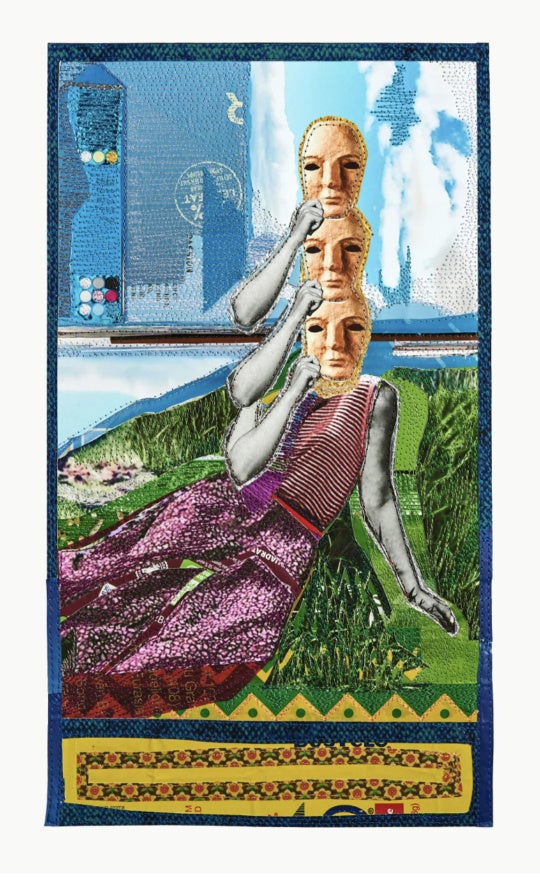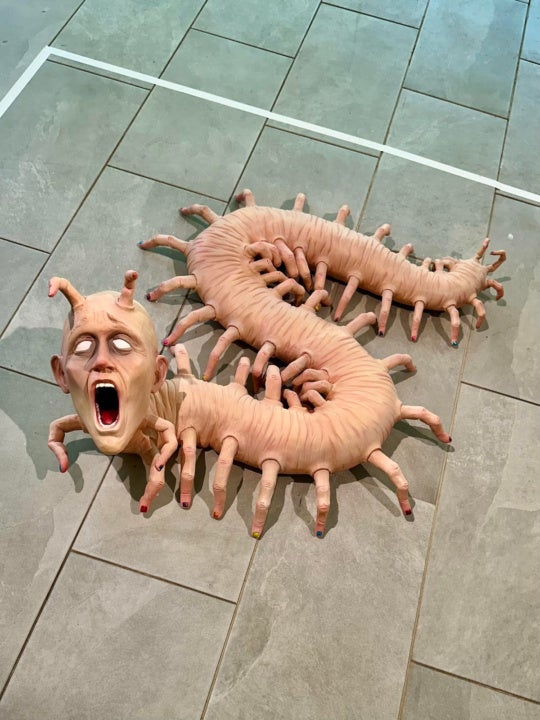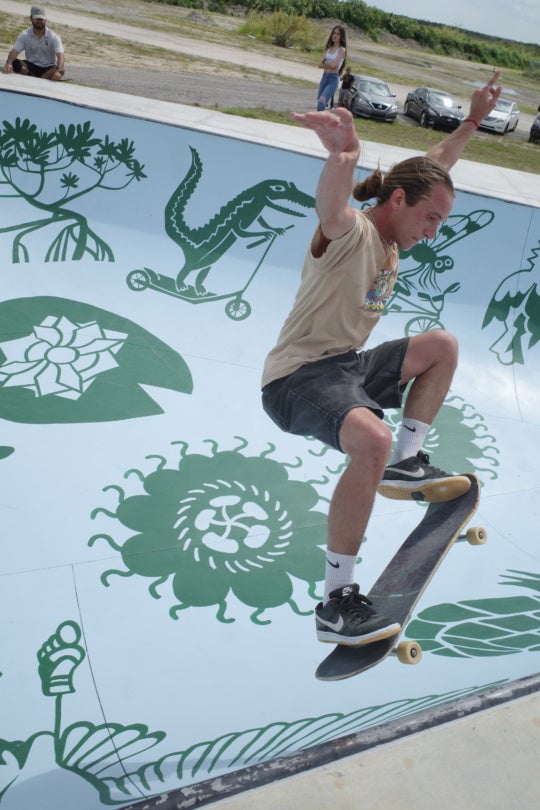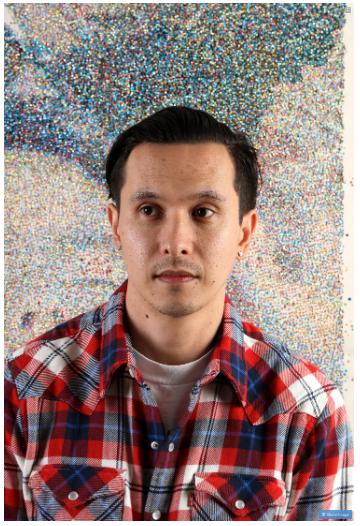
A solo show by Matthew Brandt opens at Jackson Fine Art on Friday, April 28, and he will speak at the High Museum of Art on Saturday, April 29, at 2pm. The artist is known for his experimental photographs and processes using unexpected materials. For his Lakes and Reservoirs series, for example, he photographed bodies of water and then used water from them to develop the images. Brandt received his BFA from the Cooper Union in New York (2004) and his MFA from UCLA (2008). He was one of seven artists featured in the 2015 exhibition “Light, Paper, Process: Reinventing Photography” at the Getty Museum in L.A . A solo exhibition of his work, “Sticky/Dusty/Wet,” was presented by the Columbus Museum of Art and traveled to the Virginia Museum of Contemporary Art in 2014. He is represented by Yossi Milo Gallery in New York. I chatted with the Los Angeles-based artist about his work in general and his new Atlanta-inspired series, titled 1864.
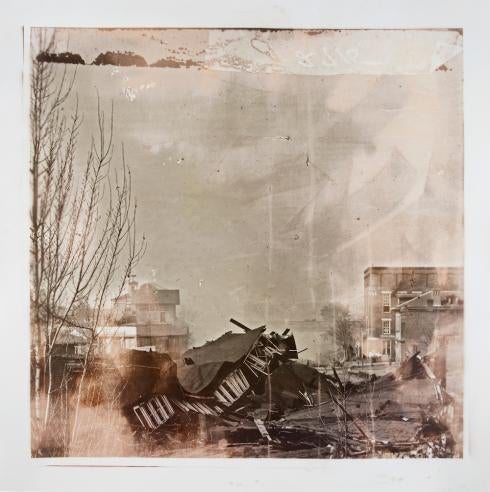
Stephanie Cash: The materials you use are often a big part of the process. How did you arrive at that and why is it so integral to your work?
Matthew Brandt: A lot of it first started when I originally went to school for photography. I went to art school in New York and then I came back to L.A. to go to UCLA, which was the first time I officially studied photography, even though I studied with artists who used photography, like Catherine Opie or James Welling. I was really trying to think about the foundations and fundamentals of photography and what it means to represent something, and how it’s never really possible to represent something fully. So at the time, I would photograph something and then collect some of that subject and incorporate it into the printing process to sort of help the subject determine its own image outcome. For instance, I would make pictures of people and I would collect their bodily fluids, like their saliva or sweat, to use as the sodium content to make their own picture. So, in a way, their sweat content produced their own image, which seemed to be a pretty good way of representing that person versus me just taking a photograph and printing it and it being totally detached from them. Literally putting them in the picture-making process seemed to be a step towards or attempt at a kind of realism, and I’ve been doing that ever since.
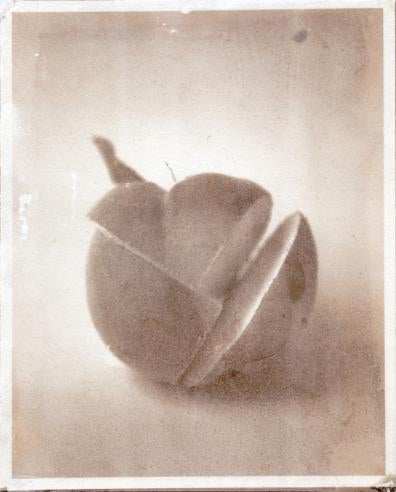
SC: Will your talk at the High be about this new body of work?
MB: It’s going to be about a lot of different projects, not just the Atlanta series.
SC: Were you commissioned to do this series for Atlanta?
MB: No, the show has already been seen at my L.A. gallery (M+B). I’d never been to Atlanta but it seemed like an interesting place to show this work, and I’ve always been intrigued by Atlanta. It’s an intense place with an interesting history. I’m coming from a very distant outsider’s perspective, so when this show was coming together, I was looking up generic pictures of Atlanta and found these pictures from the Civil War by George Barnard in the Library of Congress. You can download huge megabyte files and high-res scans of his glass plate negatives. So I was also geeking out on these files.
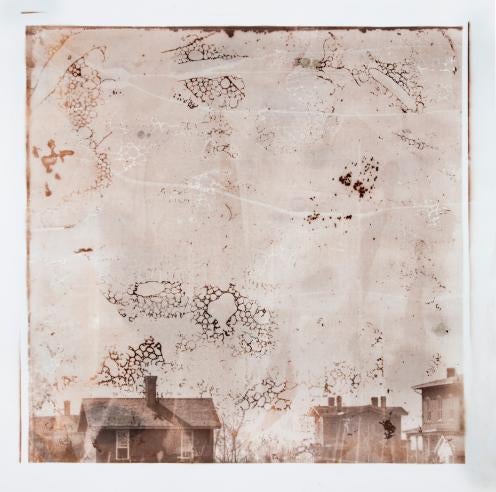
SC: You always have unique and symbolic processes for your photographs. What was your process for the Atlanta series?
MB: Before deciding to do pictures of Atlanta from the Civil War, from a really naive perspective I started to work with peaches. I was just making still lifes of these plastic and Styrofoam peaches that I bought off eBay. Then I started to think about peaches as a potential photographic medium. I started making pictures of peaches out of peaches.
SC: What do you mean?
MB: To make an albumen print, you essentially just need a piece of paper, egg whites, and salt. You mix the egg whites and salt and you have a sodium solution that you coat the paper with and let dry. Then silver nitrate is added and it becomes a light-sensitive photographic substrate that you make your print on. Photographers would basically put their glass plate collodion on top of it and that’s how they made photographs. Albumen is a material that can hold protein, so I started thinking that peaches could be used instead of egg whites. I played around with that but realized that peaches weren’t enough. So I started working with the idea of peach pie and its ingredients – eggs, peaches, cinnamon, flour, salt, sugar, and butter, and making a mixture as the albumen print. So they are sort of peach pie photographs.
SC: Yum.
MB: No, you don’t really want to eat it. There are raw eggs, and since these prints are larger, I was mixing five gallon jugs of this solution. Anything on an industrial scale kind of loses its appeal.
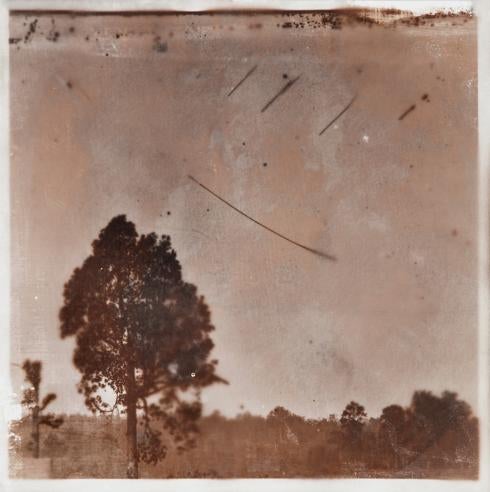
SC: Do you think this series is very different from your others because of the food ingredient?
MB: I’ve worked with food ingredients before. It’s similar in a way, but I’ve never made albumen prints, so it’s different. I do tend to work in different kinds of photographic processes. Albumen prints work with the time that the source photographs were made, and with the peach pie ingredients.
SC: Did you alter the 1864 source images?
MB: No, I cropped in on the sky a little. I was into George Barnard’s mistakes and the scratches on his glass plate negatives. It’s really difficult to make a good glass plate negative, and he’s doing this during a war, on wagons and doesn’t have the most optimal conditions for making great prints, but he did. There are a lot of scratches and tape marks and things like that, which are most apparent in the sky, the blank areas of the photographs. It seemed appropriate to zoom in on the sky because it was, in one respect, an abstraction – it highlights the process, his and mine, and a lot of the mistakes we both made in the printing process. I also like thinking about anyone who lived in that day seeing the same sky that we see now.

SC: Who or what inspires you?
MB: That’s tough. I’m always looking at artists and things – the way things work in general. Like I’ll see a really cool sign that someone has painted and the sun has beat it up and sort of looks amazing. Like I wish I made that kind of thing. But I do look at a lot of historical photo books.
SC: I see a lot of affinities in your work and that of Vik Muniz, who creates images out of chocolate or trash and then photographs them, and Spencer Finch, who tries to capture the essence of a place in fairly conceptual ways.
MB: Definitely, I love both of their work, for sure. Sometimes I feel like I’m doing variations of Muniz’s work in a way, which I kind of am. I don’t think I would be making the same work that I am if I didn’t know of him. I’m glad you mention Spencer Finch because I really do feel he’s an amazing artist and I admire his work and how he thinks about the experience of something and opens that up.
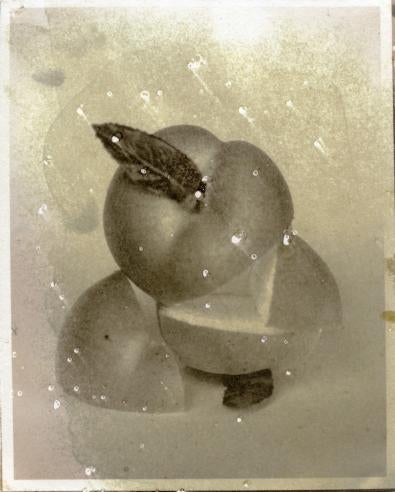
SC: What are you reading or watching right now?
MB: There’s always something. A lot of the work in studio is pretty tedious, so I usually have something on – shows or movies. I’m pretty promiscuous; I do the big hitters like Game of Thrones and Walking Dead. When working on the 1864 series, I watched anything I could on the Civil War, like the Ken Burns special; I watched all nine hours of that. I love the show How It’s Made. I feel like that’s a pretty consistent show – if I ever run out of ideas I just watch that. Like, oh cool, aluminum siding.
SC: Where did you go around Atlanta when you came to visit?
MB: We did a lot of the touristy things. I ate amazing food, went to the aquarium, and Stone Mountain. I went to Elton John’s house; I’m in his collection. And I photographed the gigantic dilapidated Kodak sign next to the Krispy Kreme.
Matthew Brandt’s exhibition “1864” will be on view at Jackson Fine Art from April 28 through July 1.

